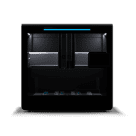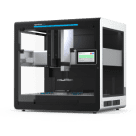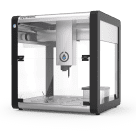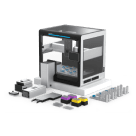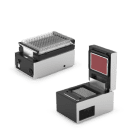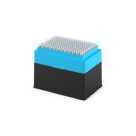Utility Commands¶
With utility commands, you can control various robot functions such as pausing or delaying a protocol, taking images with the built-in camera, turning robot lights on/off, and more. The following sections show you how to use these utility commands and include sample code. The examples used here assume that you’ve loaded the pipettes and labware from the basic protocol template.
Delay and Resume¶
Call the ProtocolContext.delay() method to insert a timed delay into your protocol. This method accepts time increments in seconds, minutes, or combinations of both. Your protocol resumes automatically after the specified time expires.
This example delays a protocol for 10 seconds:
protocol.delay(seconds=10)
This example delays a protocol for 5 minutes:
protocol.delay(minutes=5)
This example delays a protocol for 5 minutes and 10 seconds:
protocol.delay(minutes=5, seconds=10)
Pause Until Resumed¶
Call the ProtocolContext.pause() method to stop a protocol at a specific step. Unlike a delay, pause() does not restart your protocol automatically. To resume, you’ll respond to a prompt on the touchscreen or in the Opentrons App. This method also lets you specify an optional message that provides on-screen or in-app instructions on how to proceed. This example inserts a pause and includes a brief message:
protocol.pause("Remember to get more pipette tips")
New in version 2.0.
Homing¶
Homing commands the robot to move the gantry, a pipette, or a pipette plunger to a defined position. For example, homing the gantry moves it to the back right of the working area. With the available homing methods you can home the gantry, home the mounted pipette and plunger, and home the pipette plunger. These functions take no arguments.
To home the gantry, call ProtocolContext.home():
protocol.home()
To home a specific pipette’s Z axis and plunger, call InstrumentContext.home():
pipette = protocol.load_instrument("flex_1channel_1000", "right")
pipette.home()
To home a specific pipette’s plunger only, you can call InstrumentContext.home_plunger():
pipette = protocol.load_instrument("flex_1channel_1000", "right")
pipette.home_plunger()
New in version 2.0.
Comment¶
Call the ProtocolContext.comment() method if you want to write and display a brief message in the Opentrons App during a protocol run:
protocol.comment("Hello, world!")
New in version 2.0.
Capturing Images¶
Use the ProtocolContext.capture_image() method to take an image during a protocol with the Flex or OT-2’s built-in camera. You can use images to check on key protocol steps while spending more time away from the bench.
This example uses optional parameters to home the pipette, clearing the camera’s view, and give a custom name to the image file:
protocol.capture_image(
home_before=True,
filename="deck_view"
)
New in version 2.27.
Image filenames include your robot and protocol name, step number, and timestamps for the protocol and command running when the image was taken. Here, the custom filename deck_view is added to the beginning of the filename, making it easier to find the exact image you’re looking for.
You can further customize your images using the capture_image() method’s optional parameters, including image resolution, zoom, brightness, and more. After a protocol run, access and download your images from the Recent Protocol Runs section of the Opentrons App’s robot details page.
Control and Monitor Robot Rail Lights¶
Call the ProtocolContext.set_rail_lights() method to turn the robot’s rail lights on or off during a protocol. This method accepts Boolean True (lights on) or False (lights off) arguments. Rail lights are off by default.
This example turns the rail lights on:
protocol.set_rail_lights(True)
This example turns the rail lights off:
protocol.set_rail_lights(False)
New in version 2.5.
You can also check whether the rail lights are on or off in the protocol by using ProtocolContext.rail_lights_on. This method returns True when lights are on and False when the lights are off.
New in version 2.5.
OT-2 Door Safety Switch¶
Introduced with robot software version 3.19, the safety switch feature prevents the OT-2, and your protocol, from running if the door is open. To operate properly, the front door and top window of your OT-2 must be closed. You can toggle the door safety switch on or off from Robot Settings > Advanced > Usage Settings.
To check if the robot’s door is closed at a specific point during a protocol run, call ProtocolContext.door_closed. It returns a Boolean True (door closed) or False (door open) response.
protocol.door_closed
Warning
door_closed is a status check only. It does not control the robot’s behavior. If you wish to implement a custom method to pause or resume a protocol using door_closed, disable the door safety feature first (not recommended).
New in version 2.5.

